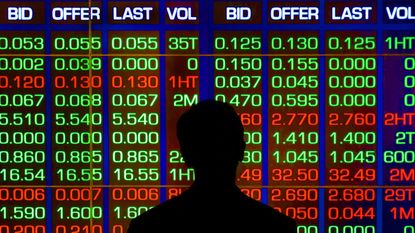Stocks rebounded to close mixed Tuesday but not before market participants spent the majority of the session continuing to fret about higher for longer interest rates, rising bond yields, a spike in prices for crude oil and the reality that the federal government is hurtling toward its first shutdown since 2019.
A stronger-than-expected reading on U.S. manufacturing activity did offer an economic bright spot on Tuesday. Orders for long-lasting U.S. manufactured goods easily topped economists’ estimates for August. The resilience in orders for durable goods was driven by “strong business investment spending and robust defense expenditures,” writes José Torres, senior economist at Interactive Brokers.
Markets spent almost the entire session preoccupied with more downbeat developments, however. In addition to mounting anxiety about rising Treasury yields and a resurgent U.S. dollar, Torres noted that the autoworkers strike is taking an increasing toll on market sentiment.
Subscribe to Kiplinger’s Personal Finance Be a smarter, better informed investor.
Save up to 74%
Sign up for Kiplinger’s Free E-Newsletters Profit and prosper with the best of expert advice on investing, taxes, retirement, personal finance and more – straight to your e-mail.
Profit and prosper with the best of expert advice – straight to your e-mail.
“The ongoing UAW strike against the Big Three automakers is also adding to investor anxiety about wage pressures, inflation, and the health of supply chains,” Torres notes.
Meanwhile, oil prices continued their ascent Tuesday, adding to worries about inflation but making winners out of select energy names. U.S. benchmark West Texas Intermediate crude oil futures rose 3.6%. Among the day’s biggest gainers were Occidental Petroleum (OXY), ConocoPhillips (COP) and Exxon Mobil (XOM).
At the closing bell, the blue chip Dow Jones Industrial Average slipped 0.2% to 33,550, while the broader S&P 500 was essentially unchanged at 4,274. The tech-heavy Nasdaq Composite added 0.2% to finish at 13,092.
Shutdowns aren’t necessarily bad for stocksThe federal government is fast approaching the October 1 deadline when it will begin shutting down. This is not good economic news, at least not in the shorter term.
“A shutdown, if it happens, would ding GDP growth in the fourth quarter, to the tune of 0.2% of GDP for every week it lasts, as nonessential federal agencies halt work and their employees go unpaid,” writes David Payne, Kiplinger staff economist. “However, whenever the shutdown ends, federal workers are likely to get back pay, which would boost growth in early 2024.”
Either way, historically it turns out that government shutdowns haven’t been particularly bearish for stocks. During the 21 government shutdowns since 1976, the S&P 500 rose 55% of the time, generating an average return of 0.3%, according to data from Carson Group. Even better, 12 months after the end of the shutdown, the S&P 500 was higher 86% of the time, with an average return of 12.7%.
It’s tough to remember now, but the S&P 500 returned 10.3% during the 35-day shutdown of 2018-2019. Stocks did fine during the extended shutdown of October 2013 too.
Related contentWhat Does a Government Shutdown Mean for Stocks?When Is the Next Fed Meeting?Kiplinger’s Weekly Earnings Calendar for This WeekWhen Is the Next CPI Report?
